
Bishop
The bishop is an interesting piece because it can move as far as it wants but only on diagonals. It is a long-range piece and can be very dangerous!
Here is what you need to know about the bishop:
The Bishop
At the beginning of the game, each side starts with two bishops. The light-squared bishop for White starts on the f1-square while Black's light-squared bishop starts on the c8-square. White's dark-squared bishop begins on the c1-square while Black's dark-squared bishop begins on the f8-square.
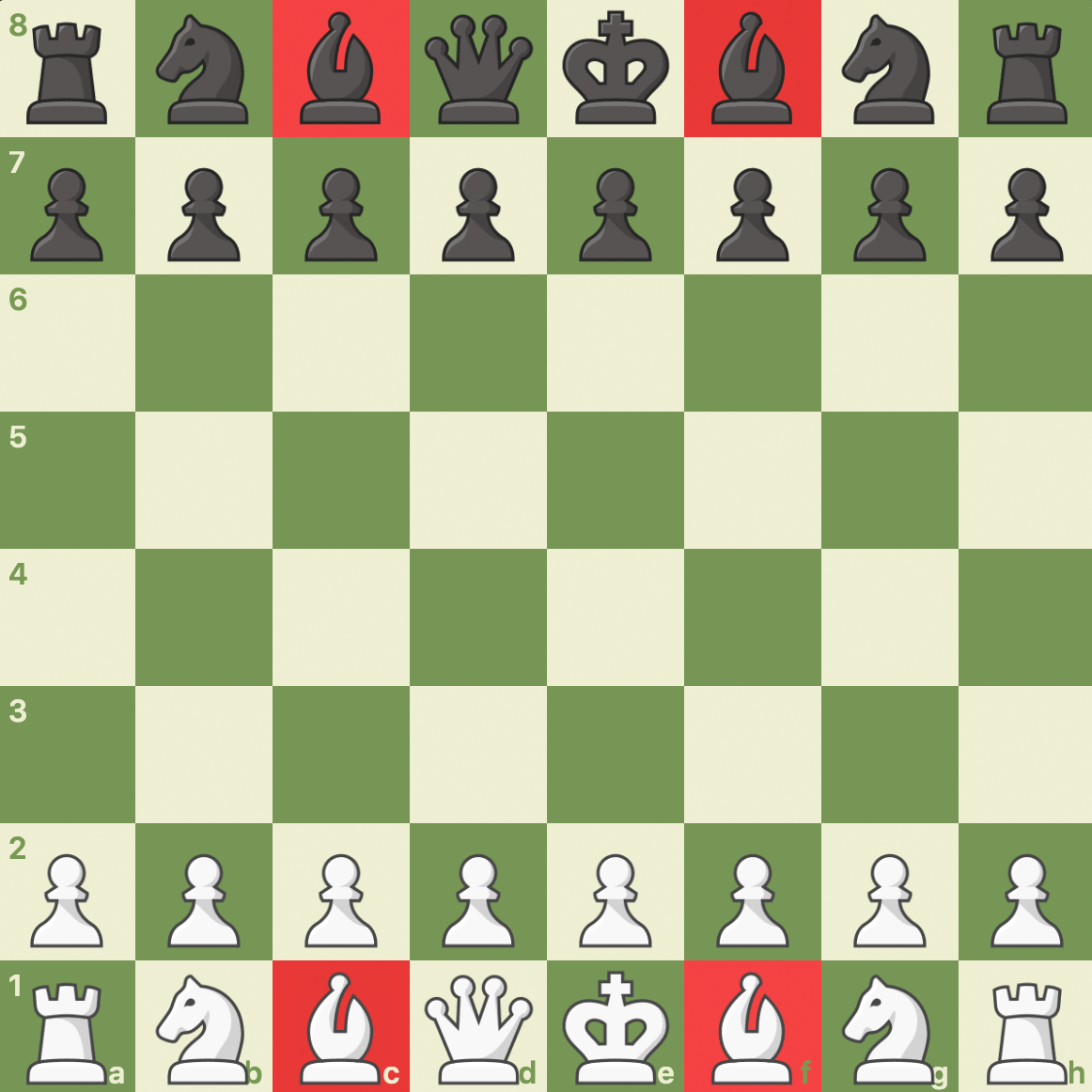
The bishop is considered a minor piece (like a knight) and is worth three points. It is considerably more valuable than a pawn (which is worth one point), equally valuable as a knight (also three points), but less valuable than a rook (five points) or a queen (nine points).
How The Bishop Moves
The bishop is interesting because it never moves straight forward, backward or side to side. It cannot hop over other pieces like a knight. The bishop moves only on diagonals.
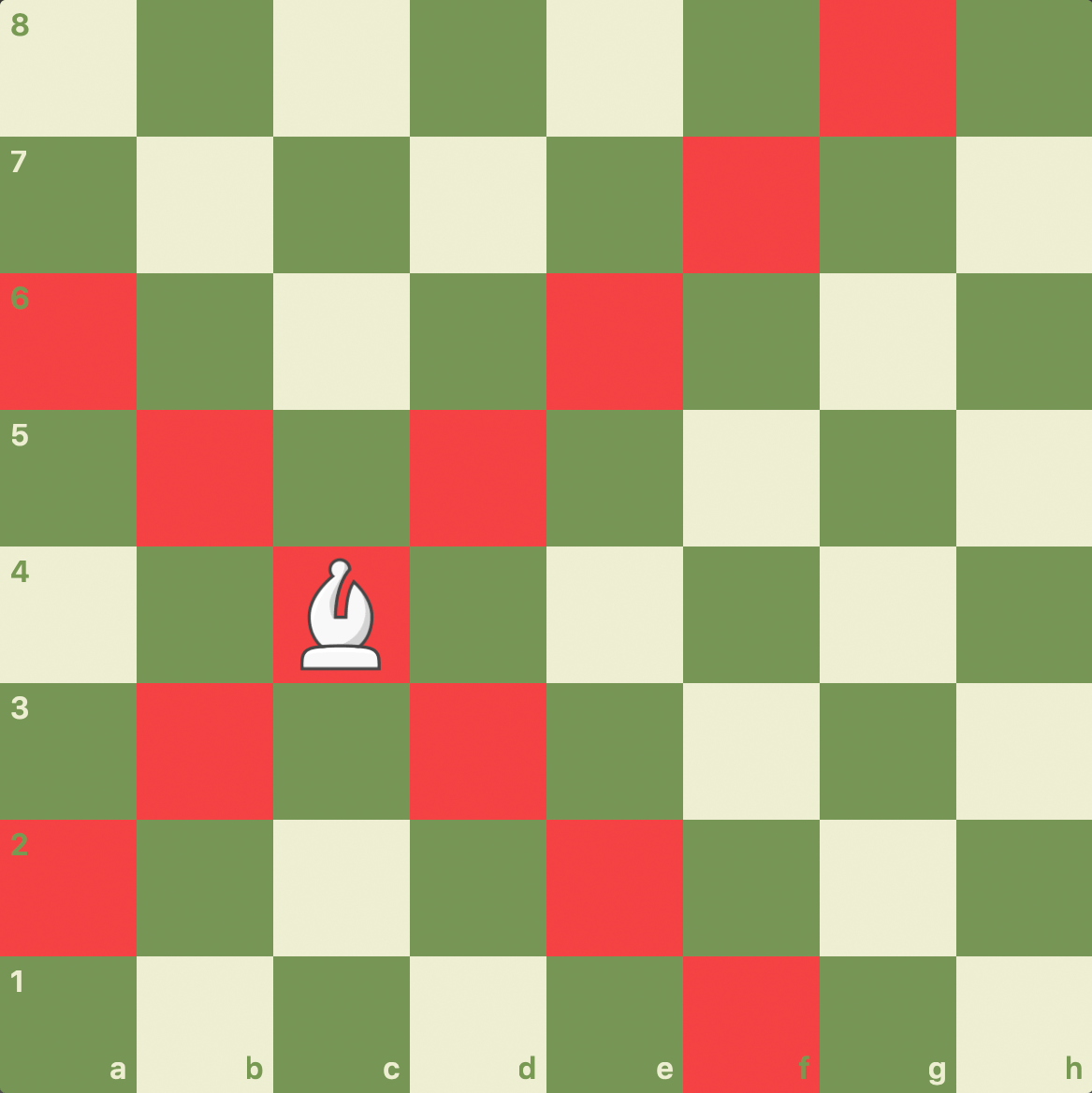
Every bishop is confined to half of the board, as it can move only on its respective light or dark squares. A light-squared bishop can move only on light squares, while a dark-squared bishop can move only on dark squares. The two bishops work well together if they are on adjacent diagonals—look how many squares these two bishops control!

A bishop can never change from a light-squared bishop to a dark-squared bishop or vice-versa. It can capture an enemy piece by moving to the occupied square and can move as many squares as it likes, as long as it is not blocked by another piece or an occupied square.
In the following diagram, Black's dark-squared bishop has no legal moves!
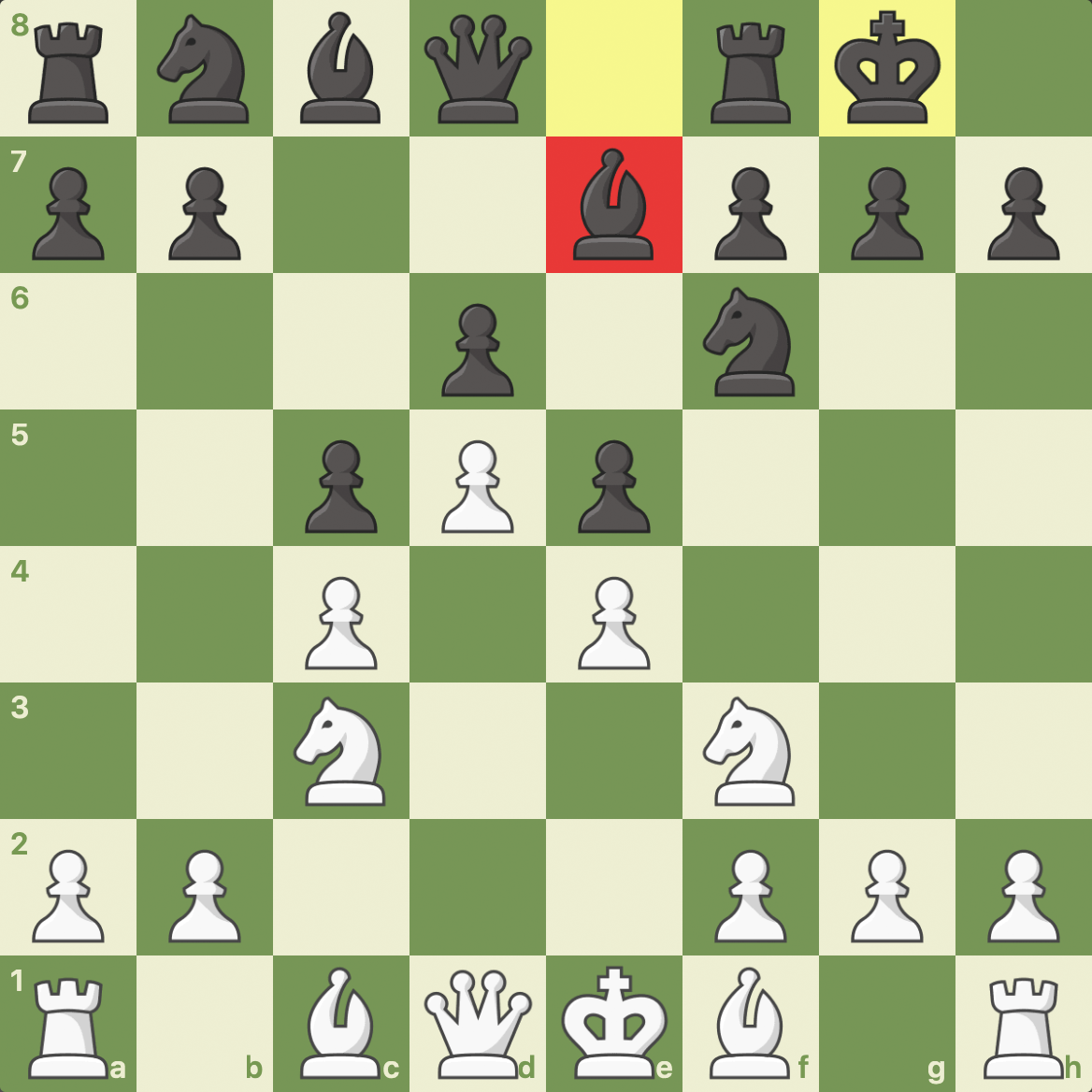
Test
Let's see if you can recognize where the bishop can move. In the following diagram can White's light-squared bishop capture the pawn on f7?
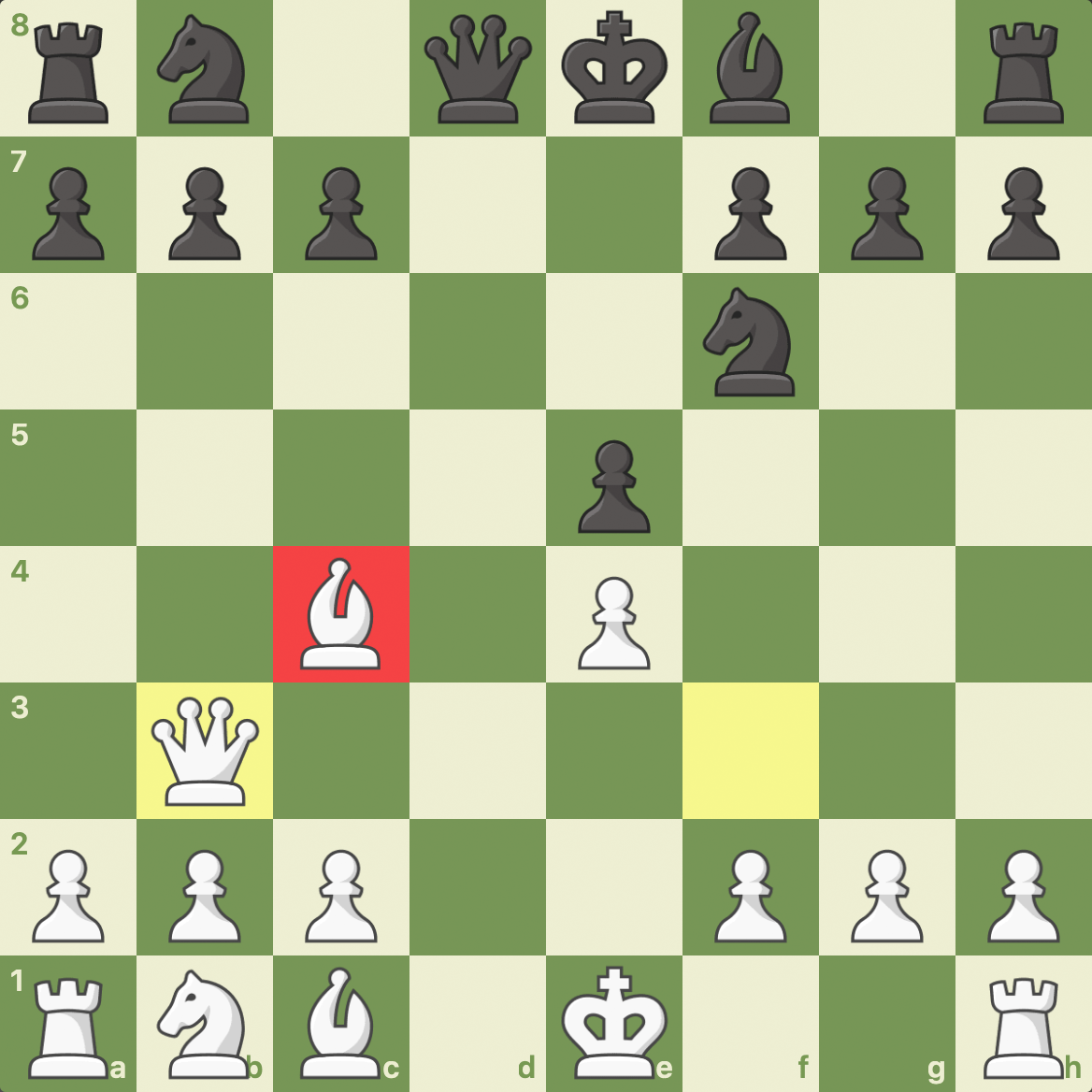
The answer is yes! The bishop on c4 can capture the pawn on f7. In the following position, can White's light-squared bishop capture the knight on c6?
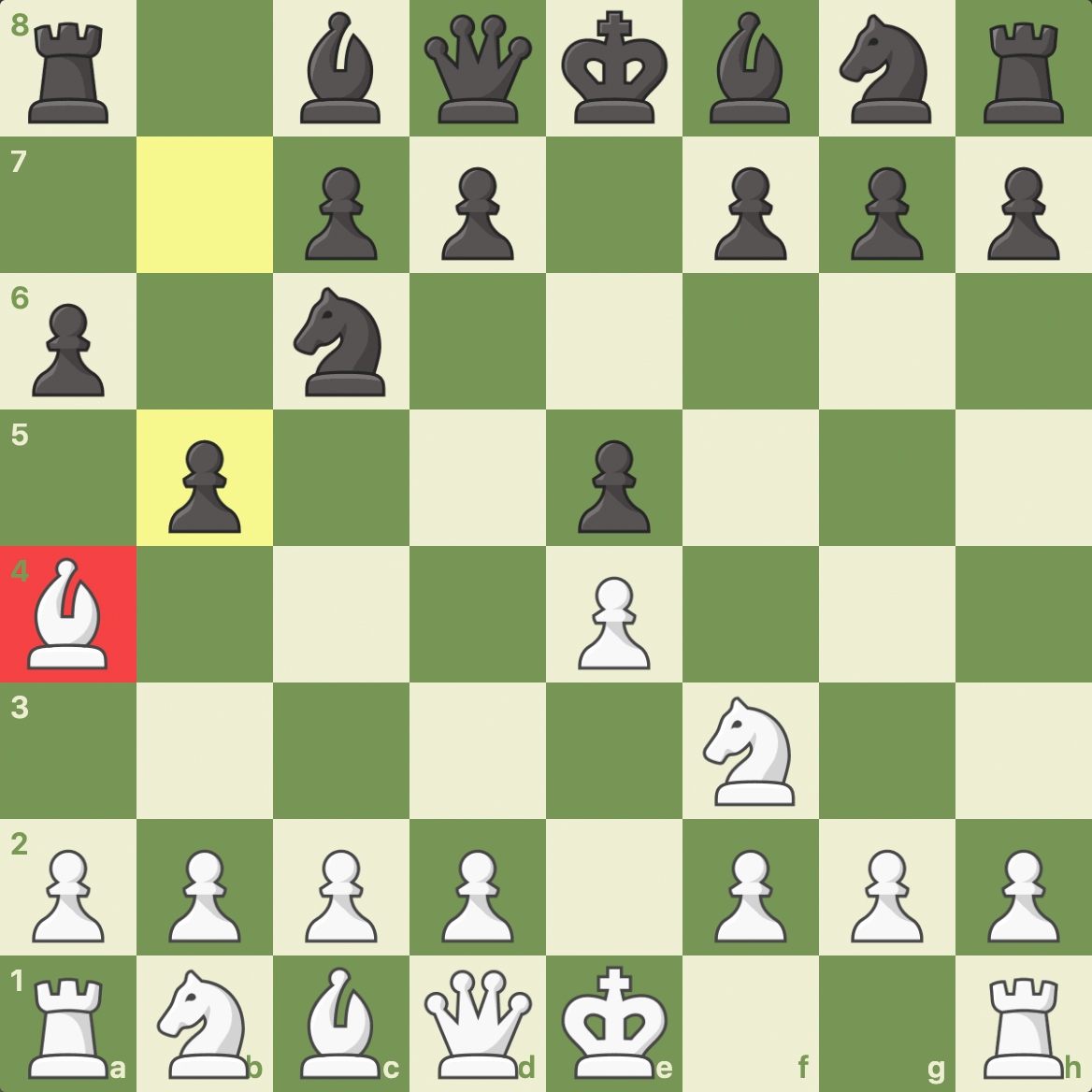
No! The bishop cannot capture the knight on c6 because it is blocked by the b5-pawn.
Conclusion
You now know where the bishops are placed at the beginning of the game, how much a bishop is valued, and how the bishop moves. Enjoy your new knowledge of this valuable piece!
Watch the Video Lesson
For some players, watching a video lesson is even better than reading an article! Check out the short video below to see the bishop in action!






